The competition between the Sinaloa Cartel and Cartel Jalisco Nueva Generación is playing out not only across Mexico, but increasingly around the globe. In this column, Vanda Felbab-Brown explores these cartels “foreign policies” in the Americas. This piece was originally published by Mexico Today.
The competition between the Sinaloa Cartel and Cartel Jalisco Nueva Generación (CJNG) is playing out not only across Mexico, but increasingly around the globe. Although the much older Sinaloa Cartel has had far more established external relations and been the innovator in expanding a global presence, CJNG is aggressively pushing into new territories abroad where it seeks to catch up to or displace the Sinaloa Cartel. In various parts of Latin America, the competition between them has amplified violence or triggered new conflicts. In Europe and Asia, the expansion of the two cartels also carries risks of greater violence as well as drug-related deaths — depending on the choices the two cartels and their foreign rivals will make. In my recent columns, I focused on how the Sinaloa Cartel rules territories, people, and institutions in Mexico and contrasted it with the CJNG rule. In this column, I explore their “foreign policies” in the Americas; in the next, in Europe and the Asia-Pacific region.
The presence and behavior of the Sinaloa Cartel and CJNG is well-known in the United States. The two cartels dominate U.S. wholesale distribution of drugs, including fentanyl, cocaine, and methamphetamine. Fearing the might of U.S. law enforcement and thus behaving with striking restraint and peacefully in comparison with their operations in Mexico, in the United States they do not engage in large shootouts or attack police officers although the Mexican criminal groups have sought to corrupt U.S. border patrol agents.
Violence in U.S. drug retail markets varies within the country and essentially does not directly involve the two cartels: Most U.S. drug retail markets are very peaceful by Mexican standards; only some, often areas with high local gang violence driven by multiple sources, such as in Baltimore or Chicago, feature high homicide rates.
In contrast, in Latin America, the involvement of the Sinaloa Cartel and CJNG has often directly instigated violence as the two cartels seek to displace each other or insist that their local drug traffic allies and proxies deal exclusively with them.
Since about 2010, the Mexican cartels began arriving in Colombia and setting up permanent presence of their emissaries to manage not just traffic from the borders of Colombia, but also production, processing, trafficking and local networks. Already during my 2010 fieldwork in Medellín and the surrounding Antioquia department and the northern Catatumbo region bordering Venezuela, I heard to an unexpected extent about the presence of Mexican criminal groups. One of the drivers of their augmented presence at that time was the 2008 extradition to the United States of the powerful Colombian drug lord Diego Murillo Bejarano “Don Berna” whose Oficina de Envigado was a very powerful Colombian drug cartel. Don Berna’s extradition led to a fracturing of his crime empire and reshaping of relations among the Mexican cartels and the leftover and new Colombian groups, such as Los Urabeños. The Mexican cartels increased their presence to manage their drug supply operations within the reconstituting Colombian crime landscape.
These dynamics only intensified during the peace negotiations between the Colombian government and the leftist guerrilla group the Revolutionary Armed Forces of Colombia-People’s Army (FARC) and after the 2016 peace deal. Once again, the Colombian drug market was experiencing profound changes: a) the withdrawal from various territories of the demobilizing FARC, b) the emergence of FARC dissident and new groups, c) the takeover of vacated territories by the so-called banda criminales, such as the powerful Urabeños, and another leftist guerrilla The National Liberation Army (ELN); and d) changes to coca cultivation patterns as Colombian cocaleros expected to be compensated for foregoing coca cultivation and to receive alternative livelihoods support and forced eradication was suspended.
But this time, CJNG was a new Mexican player on the Colombian block and the role of the Mexican cartels and their reshaping of the Colombian drug market was more violent yet. My 2019 research in the Colombian departments of Antioquia, Meta, Nariño and Cauca showed that the two cartels were actively trying to monopolize drug sales from their Colombian suppliers. Just like in Mexico, CJNG sought to persuade small and large Colombian crime groups, like the Urabeños, to stop selling to the Sinaloa Cartel. To counter the push, the Sinaloa Cartel augmented the presence of its top emissaries in the country, as Colombian government officials and investigative journalists told me at that time. Critically, the effort to cut out the Sinaloa Cartel intensified violence among the local Colombian allies and proxies of the two cartels, as the Sinaloa Cartel and CJNG both prodded their Colombian allies to expand their territorial control at the expanse of the allies of the rival group. Amidst an already highly violent, opaque, and dramatically changing crime market, the role of the Mexican groups became yet another important driver of violence.
CJNG did not succeed in marginalizing the Sinaloa Cartel in Colombia, though it did cut into its operations. The international bipolar war between the two Mexican cartels still shapes local Colombian conflicts. Moreover, the Mexican cartels help fuel Colombia’s re-escalating conflicts by paying their Colombian suppliers for cocaine in high-quality weapons.
More deeply than ever, both Mexican cartels are involved in not just drug trafficking, but also drug production in Colombia. They have been promoting the cultivation of high-yield coca cultivars which produce high-quality high-profit cocaine in larger quantities from a smaller area. Beyond negotiating prices and managing a wide array of local armed proxies from a spectrum of Colombian armed groups, the cartels’ representatives also conduct cocaine purity control checks and fund in advance coca cultivation in desired cultivars, agronomy experimentation to improve coca plants, and the construction of processing labs and warehouses.
Lately, the bipolar war between the two Mexican cartels has spread to other parts of Latin America, including, but not exclusively, to the Northern Triangle, Nicaragua, Ecuador, and Peru, as well as Chile that, until the Mexican cartels’ war arrived, had escaped the intense crime violence patterns of many Latin American countries. The violence dynamics are analogous to those in Colombia: Local gang and criminal groups seek to defect from one Mexican cartel to another, or, allied with one cartel, seek to take over the territory belonging to the proxies of the rival cartel.
This spring, Ecuador has been on the front burner, with cartel-linked violence, according to the Ecuadorian government, spilling beyond prisons and escalating to such an extent that the Ecuador president declared a state of emergency in three coastal provinces and primary drug smuggling areas: Esmeraldas, Guayas, and Manabí. The Choneros, Ecuador’s largest gang, are reportedly transporting cocaine exclusively for the Sinaloa Cartel and clashing with their Ecuadorian rivals allied with CJNG. The Sinaloa Cartel has reportedly prodded the Choneros expand their control of drug smuggling routes at the cost of CJNG allies.
Yet the Latin American activities of the two Mexican cartels do not always translate into more violence. In April 2022, credible speculation abounded that CJNG and the Sinaloa Cartel were trying to negotiate a truce among Colombian armed groups operating on both sides of the Colombia-Venezuela border, such as the ELN and the Segunda Marquetalia, the most powerful of the FARC dissident groups, and the Cartel of the Suns, formed by corrupt Venezuelan security officers, and to ease their own violence. Too much violent chaos along a key transshipment route is bad for business.
Nor is the cartels’ expansion always brutal. In Mexico, the CJNG hallmark approach to expanding and ruling territories and taking over smuggling routes has been to be more violent and fearsome than any other armed group around. In many ways, the group modeled itself on the equally violent predecessor cartel in Mexico – the Zetas.
Yet CJNG expansion in Guatemala, for example, has so far been very unlike its expansion in Mexico and the earlier Zetas expansion in Guatemala – not particular violent. As an InSightCrime article details, at least in its initial years in Guatemala, CJNG has sought to cultivate local proxies and allies, such as those active on the Pacific Coast of Guatemala and the western border with Mexico, including the Los Huistas drug rig in the province of Huehuetenango, without resorting to extensive brutality. Yes, CJNG has put out a video threatening Guatemalan police and claiming to have “cleansed” a crime-ridden Guatemalan town of La Mesilla. But CJNG-driven homicides have remained low and the Cartel hasn’t yet sought to shoot out local Guatemalan crime groups, like the Zetas did with the Leones cartel and attempted to do with the Huistas. Whether the expansion of CJNG presence in the Petén region where the Sinaloa Cartel also operates extensively stays violence-free remains to be seen.
Like their internal governance, the Mexican cartels’ activities abroad are purposeful and thought-through. They are not simply opportunistic and reactive, but rather guided by a strategy often executed over many years in which the cartels make repeated strategic decisions about how to position themselves vis-à-vis local law enforcement agencies, governments, and criminal groups and how to mix violence, corruption, and evasion. Just like politically-motivated nonstate armed groups, most prominently the Taliban before it took power in Afghanistan last summer, their strategic choices and activities abroad amount to de facto “foreign policies.”
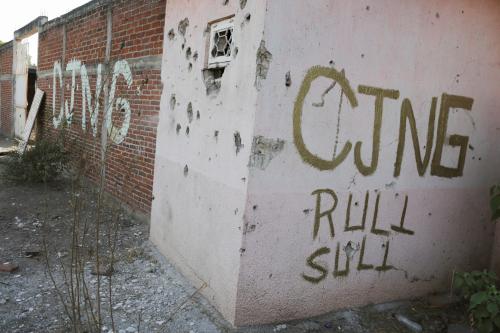
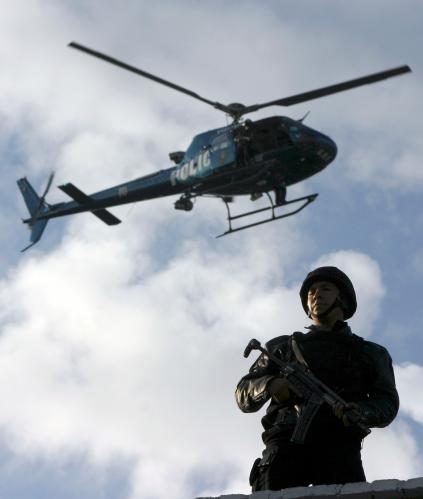
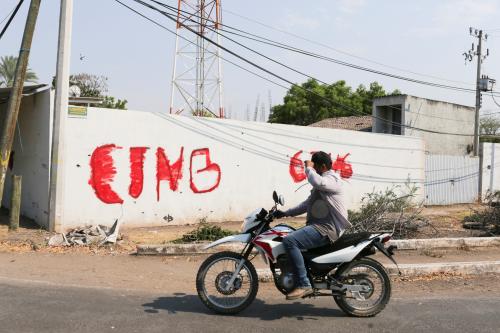

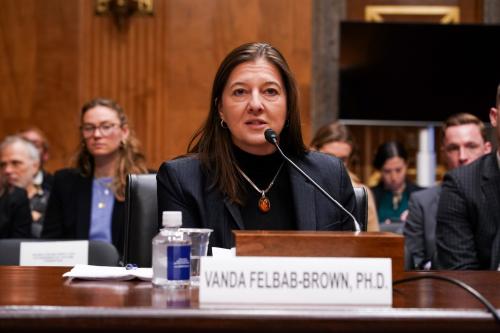
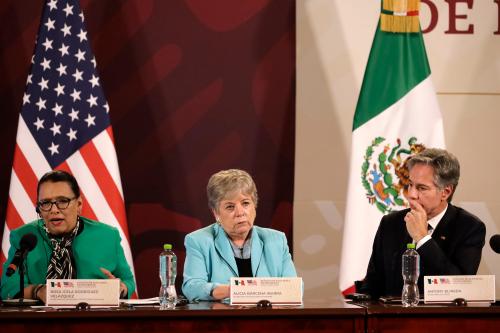
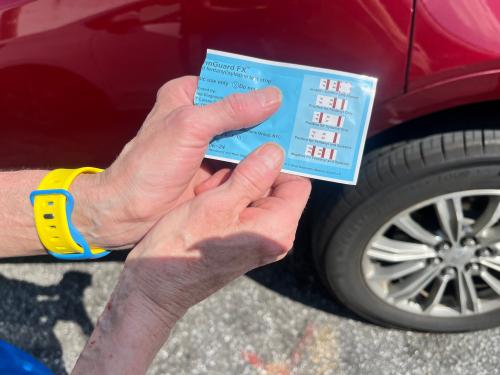
Commentary
Op-edThe foreign policies of the Sinaloa Cartel and CJNG – Part I: In the Americas
July 22, 2022